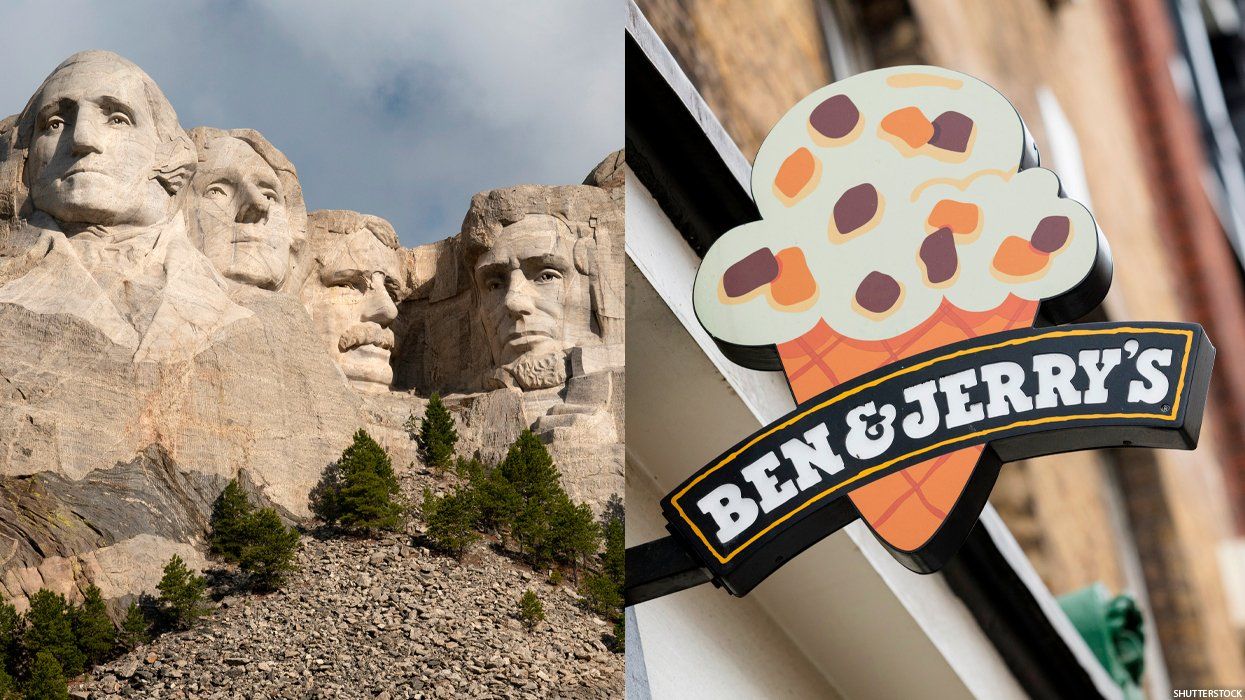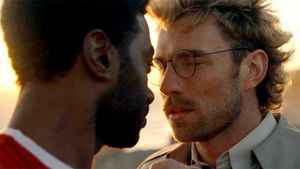On July 4th, ice cream company Ben & Jerry's reminded Americans that the U.S. exists on stolen Indigenous land. The company called for Mt. Rushmore to be returned to the Lakota Sioux, who have historical claim to the land.
On Fox News, South Dakota Gov. Kristi Noem called Ben & Jerry's "a bunch of liberal Vermont businessmen who think they know everything about this country and haven’t studied our history."
But Native American activists have long said the history of Six Grandfathers Mountain, now known as "Mt. Rushmore," is tainted by violence and treaty violations that have resulted in a contentious relationship between the Great Sioux Nation and the United States.
In 1868, the U.S. Government and the Great Sioux Nation signed the Treaty of Fort Laramie, setting aside the Black Hills—including Six Grandfathers Mountain — as part of the Great Sioux Reservation and a "permanent home" for the Sioux people. Six years later, Gen. George Custer led an expedition of miners searching for gold in the Black Hills.
The United States eventually seized the land in 1877, after the U.S. Congress made alterations to the Fort Laramie Treaty that The Lakota Nation deemed illegal.
In 1924, historian Doane Robinson campaigned for a new way to attract tourists to the Black Hills, after being inspired by a Confederate Memorial Carving in Georgia. Robinson reached out to famed sculptor and Ku Klux Klan member, Gutzon Borglum, to direct a new project that would transform the mountain into a sculpture of great American men.
Borglum pushed for the depiction of four presidents that best represented the expansion of the United States. Among the four, President Lincoln's administration had a particularly fraught relationship with the Sioux people, and Lincoln himself ordered the execution of 38 Dakota Sioux men in 1862.
Native American activists are still pushing for the Black Hills to be returned to the Sioux. In 1970, a group of activists occupied Mt. Rushmore for months, protesting the oppressive regimes of the four men depicted in the sculpture.
Quanah Parker Brightman, the son of Sioux activist Lehman Brightman, who helped lead the occupation, expressed his concerns about continued fireworks displays in the Black Hills.
"We’re very concerned about the safety of our water supply. We’re very concerned about the safety of the monument up there in regards to the surrounding area … the Black Hills, We’re worried about fire since this is fire season," he told NPR.
In regards to the Fort Laramie Treaties, Brightman said that "they both guarantee us this land where Mount Rushmore sits as long as the grass grows, the water flows and the sun shines."
As Ben and Jerry's wrote, "The U.S. exists on stolen land. We have to acknowledge that — today and every day."
- ESPN Anchor Under Fire For Mocking Indigenous NHL Player's Name ›
- Mount Rushmore Is 'Demonic Portal' For Communism, South Dakota Republican Says ›
- Over One Million Acres of Tribal Lands Flooded by Dams ›
- Minnesota State Park Land Returns to Dakota Tribe ›
- Is it Columbus Day or Indigenous People's Day? ›
- Olympic Lacrosse Gives Indigenous Culture a Chance to Shine ›


















































